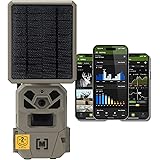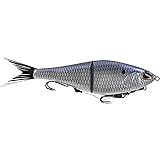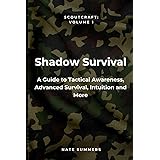Unlocking the Jungle’s Bounty: Essential Wild Foods for Tropical Survival
Have you ever wondered what it truly takes to thrive in the heart of a dense rainforest? The video above offers a compelling glimpse into the reality of jungle survival food, showcasing how skilled practitioners and indigenous guides identify, procure, and prepare sustenance directly from the wild. It’s a testament to the jungle’s incredible abundance, yet it also highlights the critical skills required to tap into this natural pantry. Learning about these wild jungle foods can make all the difference in a survival scenario.
Living off the land in a tropical environment is a profound challenge, demanding a deep understanding of edible plants, effective hunting and fishing techniques, and resourceful cooking methods. This comprehensive guide expands upon the practical demonstrations seen in the video, delving deeper into the specifics of sourcing and preparing crucial wild foods. From the easily overlooked treasures of the forest floor to the elusive game lurking in the shadows, mastering these elements is fundamental for anyone venturing into the wilderness.
The Jungle’s Natural Pantry: Discovering Wild Edibles
While the jungle’s dense foliage can seem impenetrable, it conceals an astonishing variety of edible plants. Knowing which ones to seek out can provide essential calories and nutrients. The video introduces us to several key examples, illustrating how even seemingly common plants can be transformed into vital food sources with the right knowledge.
Sweet Treats and Essential Carbs: Cocoa and Heart of Palm
The journey into jungle survival food often begins with plants. The cocoa bean, for instance, is more than just the source of chocolate; its fresh, white pulp offers a surprisingly sweet and refreshing treat, as demonstrated by the Rama Indian guide. Fifty years ago, these areas were active cocoa farms, indicating the plant’s natural abundance and historical significance to local populations. While the raw seed might not be “ripe,” it’s still good for chewing, offering a taste of the jungle’s natural sugars.
Perhaps one of the most abundant and valuable wild edibles highlighted is the heart of palm. Known as a “walking palm” due to its elevated root system, this plant provides significant carbohydrates. The video shows the effortless process of felling a young palm and peeling away its fibrous outer layers to reveal the tender, sweet core, often described as “like candy.” This part is not only delicious but also incredibly filling, making it a critical staple for sustained energy in a survival setting. Proper identification of these palms, however, is crucial to avoid potentially toxic look-alikes.
The Versatile Breadfruit: Jungle’s French Fry Equivalent
The breadfruit tree stands out as an exceptional resource for wild jungle foods. As one of the participants excitedly exclaims, it’s “like French fries in a tree” when fried. This fruit is a fantastic source of carbohydrates, making it a calorie-dense food that can sustain a group for extended periods. The video marvels at the agility of the Rama guide, Rito, who demonstrates a genius method of harvesting, using a stick to knock down the buoyant fruits.
Breadfruit is incredibly versatile; it can be baked, boiled, or fried, offering diverse culinary options even with limited resources. Its abundance and ease of preparation solidify its status as a favorite among indigenous tribes and survivalists alike. Procuring grease from wild hogs or other sources can elevate its flavor and caloric value, turning a simple staple into a truly satisfying meal that fuels continued jungle exploration.
Hooking Your Dinner: Effective Jungle Fishing Strategies
Beyond plant-based edibles, the jungle’s waterways teem with aquatic life, providing vital protein sources. Effective fishing strategies are essential for a balanced jungle survival food diet. The video showcases a successful morning fishing trip, emphasizing the sheer abundance of fish in these tropical rivers.
Identifying Local Catches: Machaca, Bass, and Snook
The team successfully catches three distinct types of fish, highlighting the diversity available. The Machaca, locally considered an aphrodisiac, is noted for its piranha-like qualities and formidable teeth, which even destroyed their treble hooks. This suggests the need for durable fishing gear or improvised hooks in a true survival situation. They also landed a Bluegill, familiar to many from the States but notably larger in the jungle, and a new experience: the Tiger Bass.
Crucially, the Rainbow Bass, a favorite of the indigenous Rama people, is presented as a particularly meaty fish with a thick fat layer. In survival, fat is an absolute essential for energy and metabolic functions. The video details a simple yet effective cooking method: descaling the fish to retain this vital fat, grilling it on a simple Y-stick setup over an open fire. This yields a high-calorie meal that is “absolutely delicious.” The successful catch of ten fish in a mere two-hour timeframe by four guys in two boats underscores the significant food potential of jungle rivers.
Strategic Procurement: Hunting and Trapping Wild Jungle Game
While foraging and fishing provide consistent sustenance, larger game offers concentrated protein and fat, crucial for long-term survival. The video demonstrates attempts at hunting and trapping, showcasing ingenuity and the importance of adapting to environmental conditions.
Agile Hunters and Indigenous Wisdom: Caiman and Agouti
The hunt for Caiman, a smaller relative of the alligator, illustrates the challenges and rewards of active hunting. The team attempts to snare a Caiman using a bushcraft noose, a simple yet effective tool crafted from a ten-foot pole and paracord. This demonstrates the “easier the better” philosophy in bushcraft. However, external factors like a full moon can hinder success, as Caiman tend to be less active, proving that even experienced hunters must contend with nature’s unpredictable rhythms.
More successfully, the team procures Agouti, a large rodent related to the Paca family, providing a valuable source of red meat. This underscores the importance of hunting skills and the ability to identify local fauna that can supplement the diet. The raw processing of the Agouti, dropping its skinned body and organs onto leaves, shows a pragmatic approach to field dressing, ensuring minimal waste in a survival context. The Agouti is later grilled, tasting like a cross between steak and chicken.
Unexpected Proteins: Jungle Snake as a Delicacy
For the truly adventurous survivalist, even unexpected encounters can yield a meal. The video features the capture of a six to seven-foot jungle snake, which the team decides to fry up. This highlights the adaptability required in survival; any safe, viable protein source should be considered. Processed into medallions and lightly fried with spices, it becomes a “treat” and a new experience for some, expanding the definition of wild jungle foods.
From Raw to Rations: Primitive Cooking and Camp Craft
Procuring food is only half the battle; knowing how to prepare it safely and efficiently is equally vital. The video expertly demonstrates several primitive cooking techniques and crucial camp management considerations.
Fire-Cooked Feasts: Simple Setups for Delicious Meals
The camp chefs illustrate simple but effective cooking setups. They create a grill using four Y-sticks and a couple of crossbars, perfect for cooking fish wrapped in banana leaves or grilling Agouti. This method utilizes readily available natural materials to create a functional cooking station. The emphasis on cooking fish with its scales on is a clever trick to retain the essential fat, maximizing caloric intake. Roasting the sweet heart of palm offers another culinary delight, providing a celery-like flavor with a cabbage texture.
The meals prepared—fried Snook, fried breadfruit, heart of palm, and grilled Agouti—showcase a complete and nourishing diet assembled directly from the jungle. The testament to their deliciousness, even for those who “don’t even like bass back home,” speaks volumes about the quality of fresh, wild-sourced ingredients prepared with care. These moments of sharing food create morale and reinforce the communal aspect of survival.
Navigating Jungle Challenges: Army Ants and Camp Relocation
Survival in the jungle isn’t without its persistent challenges. One significant hurdle shown in the video is the presence of Army Ants. These “prolific” insects are an “exponential problem” if a camp remains stationary for too long, swarming any food leftovers and delivering painful bites. This forces survivalists to be nomadic, constantly relocating their camps not only for resource changes but also to escape these relentless pests.
Understanding and managing such environmental factors is paramount for sustained comfort and safety. The continuous movement, while taxing, is a strategic response to avoid becoming overwhelmed by the jungle’s smaller, but no less formidable, inhabitants. This practical lesson on camp management is just as critical as knowing your jungle survival food sources.











